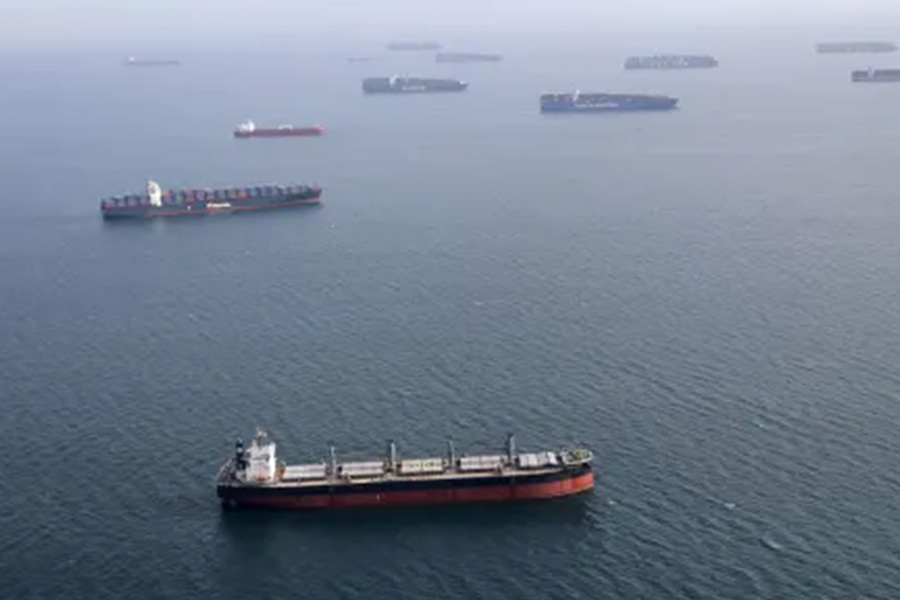Ocean freight orders are signaling a big drop in consumer demand
A significant consumer pullback is showing up in ocean shipping, with logistics managers telling CNBC they have seen a 20% drop in ocean freight orders for the months of September and October. The decline in demand cuts across many products, including machinery, housing, industrial and some apparel. Logistics CEOs explain to CNBC the reason is a combination of too much inventory coupled with a lack of clarity on consumer demand.
The ocean shipping trend echoes recent comments from logistics industry executives. Georgia Port Authority executive director Griff Lynch said he expects the number of waiting ships to drop over the next several weeks after seeing historic vessel calls
In apparel and footwear, executives say there is no definitive trend, though inventory issues are becoming more prevalent. Nike’s overstock problems announced last week in its earnings weighed on the stock.
“Inventory levels are high as consumerism shifts further to off-price,” said Brett Rose, CEO of United National Consumer Suppliers. “Bigger brands are very conscious of current season and trends. A Bloomingdale’s consumer doesn’t want last season’s shoes or handbags. These items will be attractive to consumers of retailers like T.J. Maxx, Marshalls, Ross Stores,” he said.
Seko Logistics tells CNBC that orders for expensive items like smart parcel lockers, integrated server racks, ultrasound machines, and time-sensitive cargo like retail displays are still strong.
DHL Ocean Freight tells CNBC it is not currently seeing any indication of a 20% drop off in orders. But with no rush anticipated in the build up to the Chinese national holiday of Golden Week, it expects demand to be flat in October. The ongoing threat of labor action among rail and port workers in some geographies, port congestion in Europe, and weather-related schedule disruptions will likely lead to more canceled sailings and port omissions, partially offsetting some of the rate decreases out of Asia Pacific.
To put a floor on prices, ocean carriers are doing what’s called tactical canceled sailings so they can match the vessel space with orders, which they hope will stop the decline in prices. In a note to clients, HSL Logistics said its vessel cuts were by nearly 50% and that the pullback in vessel capacity may continue into 2023 until demands pick up before Chinese New Year, which is in late January.
It will take time for the cut in capacity to stop the freight rate slide. According to Freightos, Asia-US West Coast prices (FBX01 Daily) fell 8% to $2,978/Forty Equivalent Units (FEU). That rate is 82% lower than the same time last year. Freight prices for the Asia-US East Coast route (FBX03 Daily) decreased 5% to $6,952/FEU, and are 63% lower than the rates for this week last year.
Other data points which signal a decrease in orders are the outbound tender rejections.
The higher percentage of rejections indicates tighter capacity; the lower the percentage shows looser capacity. “Right now we are tracking at 2019 levels and are down 80% from where we were a year ago. Looking at spot rates excluding fuel surcharges, we are currently 31% below where we were last year,” said Kevin Hill, Head of Communities and Research for FreightWaves.
The CNBC Supply Chain Heat Map shows vessel congestion on the East Coast continues and the impact of Hurricane Ian will delay the clearing out of vessel congestion, according to MarineTraffic.
During the period of September 12-18, the Port of Savannah reached the highest number of weekly average days waiting at anchor since April 2022, according to Alex Charvalias, supply chain in-transit visibility lead at MarineTraffic. “Because of Hurricane Ian, zero vessel calls have been recorded at the Port of Savannah since September 29. There is no question this new disruption by Ian will increase the existing congestion even more.”




